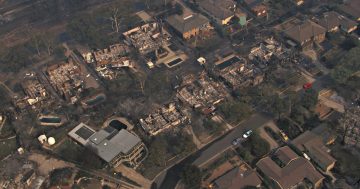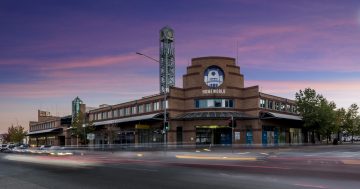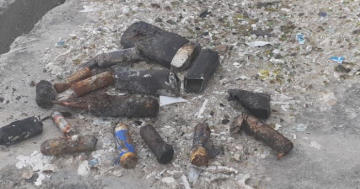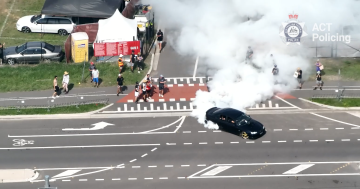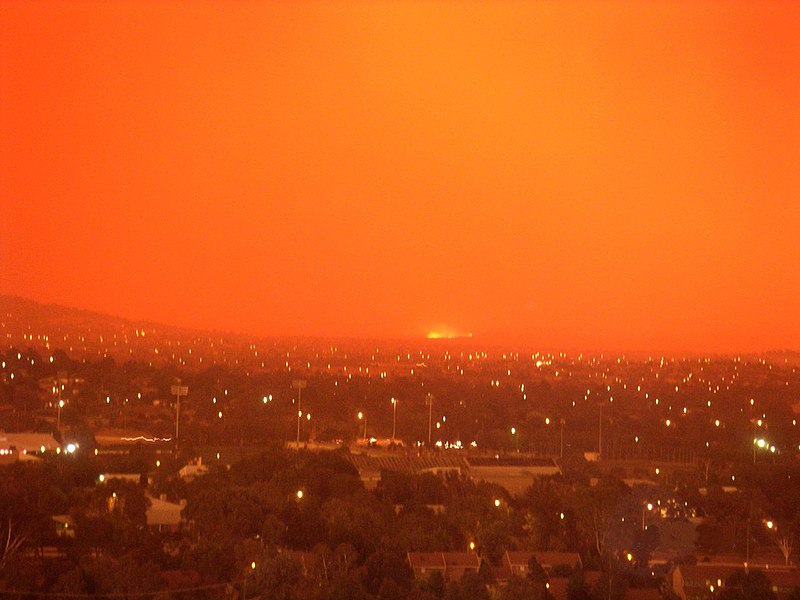
Catastrophe: the scene in Canberra 20 years ago looking to the north-west. Photo: File.
18 January, 2003, is seared into the minds of many Canberrans, particularly if, like me, you happened to live in Weston Creek at the time.
It’s hard to believe that on Wednesday it will be 20 years since those darkest hours, when day turned to night as an unstoppable dragon roared down from the mountains to lay waste to the city’s western edge.
Four lives and 488 homes were lost in a disaster that now marks a dividing line in Canberra’s history.
My family and I were lucky to be living in Stirling at the time, thankfully, we learnt as the afternoon progressed, out of the fire’s path but still under a black sky, without power, struggling to gather precious items in case we had to flee and huddled around the radio as the ABC reported from the fire ground in terrifying detail on yet another property being consumed.
In the weeks before, we had watched the billowing clouds of smoke rising from the mountains believing we were still untouchable in the city, only for that confidence to evaporate with every passing scorching day.
The days before ash rained over the city and as news editor of The Canberra Times, I told ABC radio’s What the Papers Say program that you didn’t have to be Einstein to know what would happen if the fire reached the pine forests that lined the city’s edge in those days.
The night before we reported that the fires had broken through, and by afternoon, driven by that terrible north-westerly wind, the worst was upon us.
From the roof of our home I could see the flames tearing through the Chapman hills and hear a roar like a jet engine, punctuated by gas connections exploding.
But Stirling remained unscathed. Our recent rental property in Weston, however, lay in ruins after a fireball strike. There but for the grace of God …
Friends had lost their homes, our children’s school had lost buildings, and the pine forests were grotesque expanses of black figures bent low by the gale.
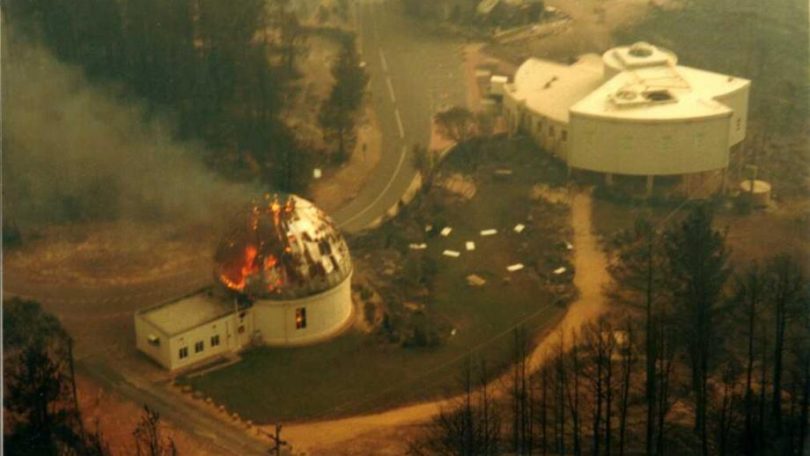
A Mt Stromlo observatory ablaze during the 2003 bushfires. Photo: ANU.
The full extent became clear the next day, particularly with the first aerial pictures of the devastation.
For many of us, the experience was so traumatising that the smell of smoke and the sound of helicopters set off panic long afterward.
There was much soul searching, recriminations and the expected inquiries to help find a way to avoid it happening again.
The suburbs have been rebuilt; in fact, new ones have sprung up in Molonglo, West Belconnen and Ginninderry, establishing a new, wider front line to defend.
The western edge is still on the table for the city’s expansion, and the topic of bushfire is never too far away, particularly as the evidence grows that global warming means an increasing frequency and intensity of fire events.
The long, punishing 2019-20 fire season only reinforced those fears.
The recent report from the ACT Multi Hazard Advisory Council on the 20 years since 2003 shows the huge amount of work that has been done to rectify the problems identified in the disaster but also urges the ACT Government to take a more holistic and whole-of-government approach to the challenge, as well as beef up the resources to keep bushfires at bay.
It wants the Government to use every tool available to prevent, mitigate and fight bushfires, and adapt to an increasingly dangerous environment.
That means more funding, more research, more staff, more equipment, traditional Indigenous burning practices, more firefighters, professional and volunteer, and developing a volunteer workforce on the ground that can capture a range of local skills and knowledge, beyond holding a hose.
It will cost taxpayers and challenge budgets.
From a planning point of view, the outlook imposes constraints on Canberra’s growth, which coincidently fits with the Government’s infill bias to avoid urban sprawl, and poses problems for the Canberra Liberals who would like to see more family homes built in the ACT and identify the western edge and areas across the Murrumbidgee in Tuggeranong for development.
Not that the Government is not exploring options along the western edge, but it has a much more conservative approach.
Whatever government we have, further development in the west will be framed by bushfire risk and whether it can be managed.
Twenty years on, the message for government is that the changing climate means it will have to muster all its collective resources so the ACT can avoid but if need be fight the firestorms to come.
It’s a dramatic call to arms but one that needs to be heeded.












